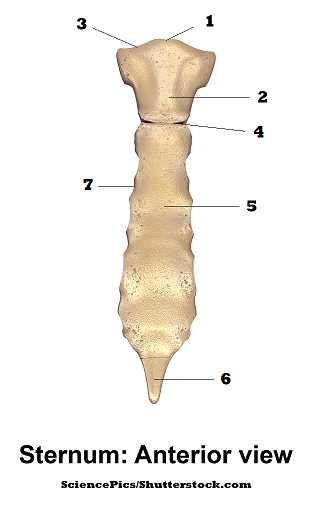Bone cells are called:
osteocytes
The diaphysis of a long bone is also called the:
Shaft
"Turning around its own axis" is a description of which type of movement?
Rotation
Articulations are:
bone cells - joints - long bones
Joints
This bone condition occurs most frequently in postmenopausal white females with calcium deficiencies:
Osteoporosis
The strong membrane that surrounds long bones is known as:
Periosteum
Which of the following bones are NOT part of the axial skeleton?
ribs - vertebrae - carpals - sternum
Carpals
This term means inflammation of the bone and joint.
arthritis
An exaggerated lateral (side-to-side) curvature of the spine is called:
scoliosis
The movement that takes the extremity away from the midline of the body:
Abduction
This fibrous membrane lines the medullary cavity.
Endosteum
An abnormal vertebral column condition also known as hunchback:
Lordosis - kyphosis - scoliosis
Kyphosis
What makes up the appendicular skeleton?
arms, legs, upper and lower extremities, pelvis
The hollow spaces within the cranium are called:
sinuses
When articular surfaces are not intact, this is called:
dislocation
ligaments are strong, fibrous connective tissue that make up a joint and connect bone to what?
bone
When the angle of a joint is decreased to move toward the midline of the body. This is which type of movement?
Adduction
An osteosarcoma is a skeletal _______.
tumor
medullary cavity
Bone building cells are called:
Osteoblasts
An injury to the ligament surrounding a joint is known as a:
sprain
The toes pointing upward is an example of which movement?
plantar flexion or dorsiflexion
dorsiflexion
The ends of long bones are called the:
Epiphyses
The opposite movement for flexion is:
Extension
This type of articulation produces no movement.
synarthroses - diarthroses - amphiathroses
Synarthroses
An inflammation of the bone that results in bacterial infection.
osteomyelitis
Which bone cells are responsible for removing old or damaged bone tissue?
osteoclasts
Uric acid
The toes pointing downward is an example of which movement?
plantar flexion or dorsiflexion
plantar flexion
The shaft of the bone is called the:
Diaphysis
These joints permit the widest range of movement.
synarthroses - diarthroses - amphiathroses
Diathroses
#6 is which bone? 
Xiphoid process
This term means a loss of bone density/matrix.
osteoporosis
infectious arthritis or lyme disease is an inflammation of joints caused by:
ticks or spirochete bacteria
Hematopoiesis/hemopoiesis refers to:
Production of RBCs in the bone